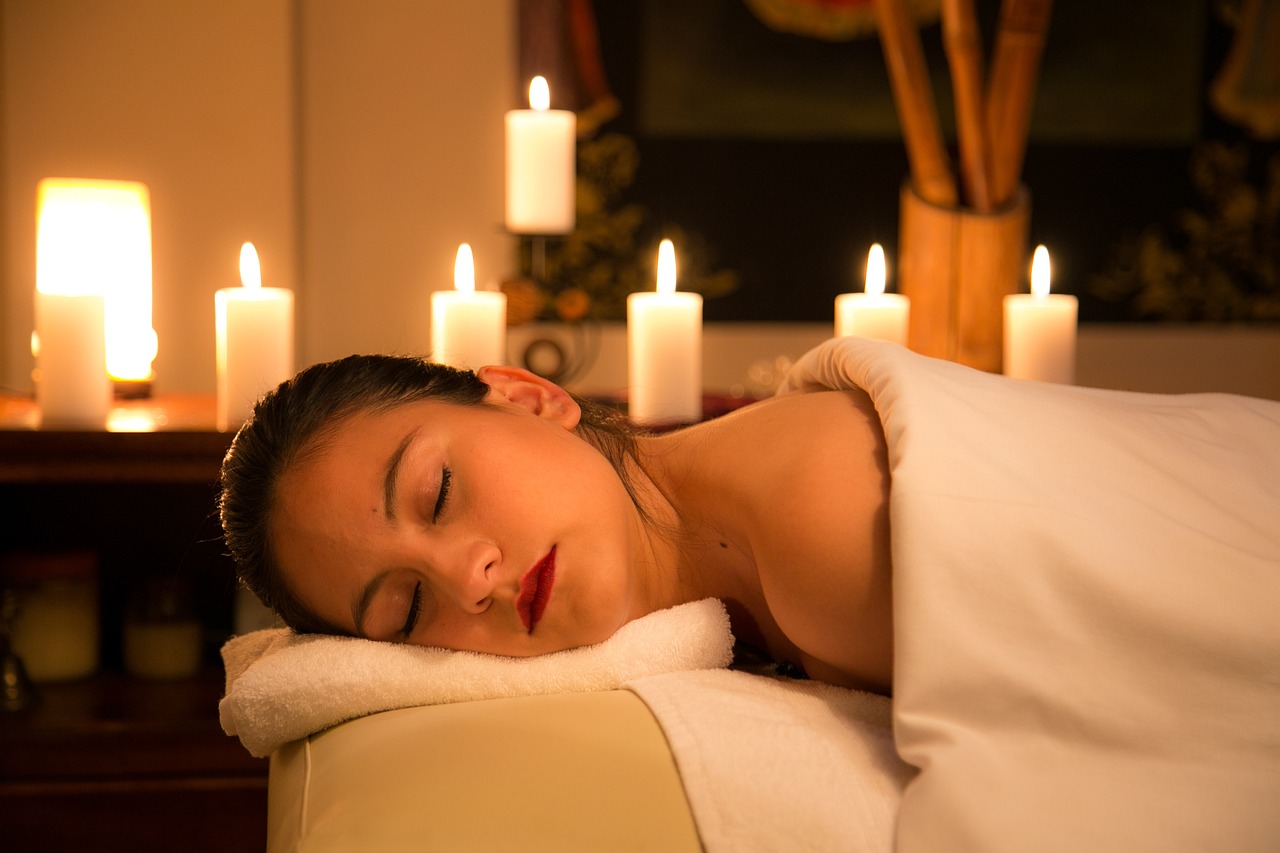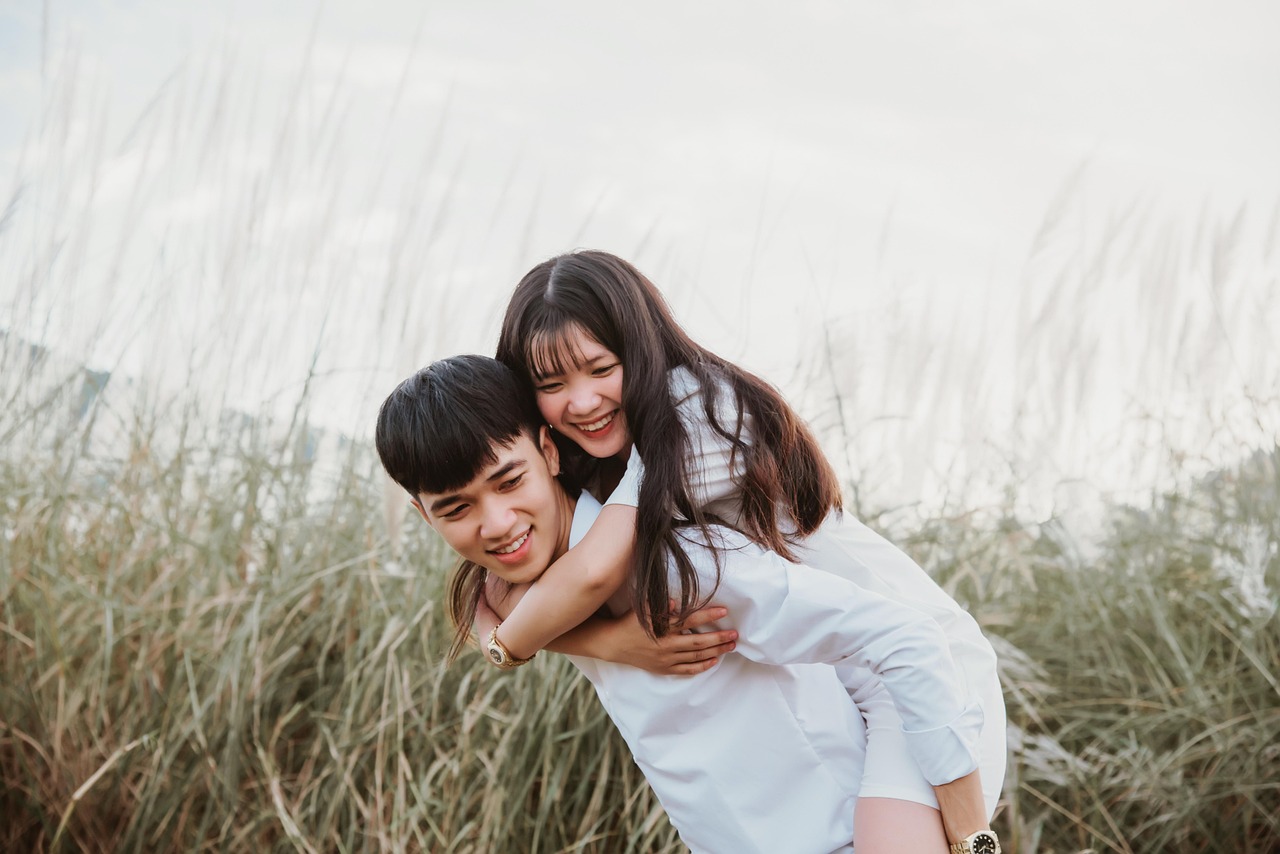This article explores the rich history, techniques, and global impact of Asian massage practices, highlighting their cultural significance and the growing popularity of these methods in wellness and therapeutic settings.
Asian massage techniques encompass a variety of practices, each with its own unique philosophy and approach. Among the most prominent techniques are Traditional Chinese Medicine and Ayurvedic practices. These methods not only focus on physical healing but also aim to restore balance and harmony within the body.
The historical roots of Asian massage can be traced back thousands of years, reflecting the cultural and spiritual beliefs of various Asian societies. For instance, Tui Na, a foundational practice in Traditional Chinese Medicine, has been utilized for centuries to promote health and well-being. Its evolution showcases the adaptability of these techniques across different cultures and eras.
In Japan, Shiatsu—which translates to “finger pressure”—is a technique that combines the principles of acupressure with the philosophy of holistic health. This method emphasizes the importance of energy flow, or Qi, and aims to alleviate physical ailments while promoting mental clarity.
Similarly, Thai massage offers a holistic experience by integrating acupressure and yoga-like stretching. This unique approach not only enhances physical flexibility but also fosters a deep sense of relaxation and mental well-being.
In India, Ayurvedic massage is a vital part of holistic health practices. This technique focuses on balancing the body’s energies, known as doshas, to achieve optimal health. Personalized treatments based on individual dosha types are a hallmark of this ancient practice.
As Asian massage techniques have transcended cultural boundaries, their popularity has surged worldwide. Many wellness centers now incorporate these therapies, recognizing their benefits in promoting overall health. This adaptation often involves modifications to suit local preferences while preserving the essence of the original techniques.
Asian massage offers numerous physical and mental health benefits. Techniques such as Tui Na and Shiatsu are renowned for their effectiveness in alleviating pain and enhancing flexibility. Additionally, the calming effects of these practices contribute significantly to stress reduction and overall relaxation.
Choosing the right Asian massage technique can be daunting, given the variety of options available. It is essential to consider individual needs and preferences when selecting a method. Engaging with a knowledgeable practitioner can provide personalized recommendations based on specific health goals.
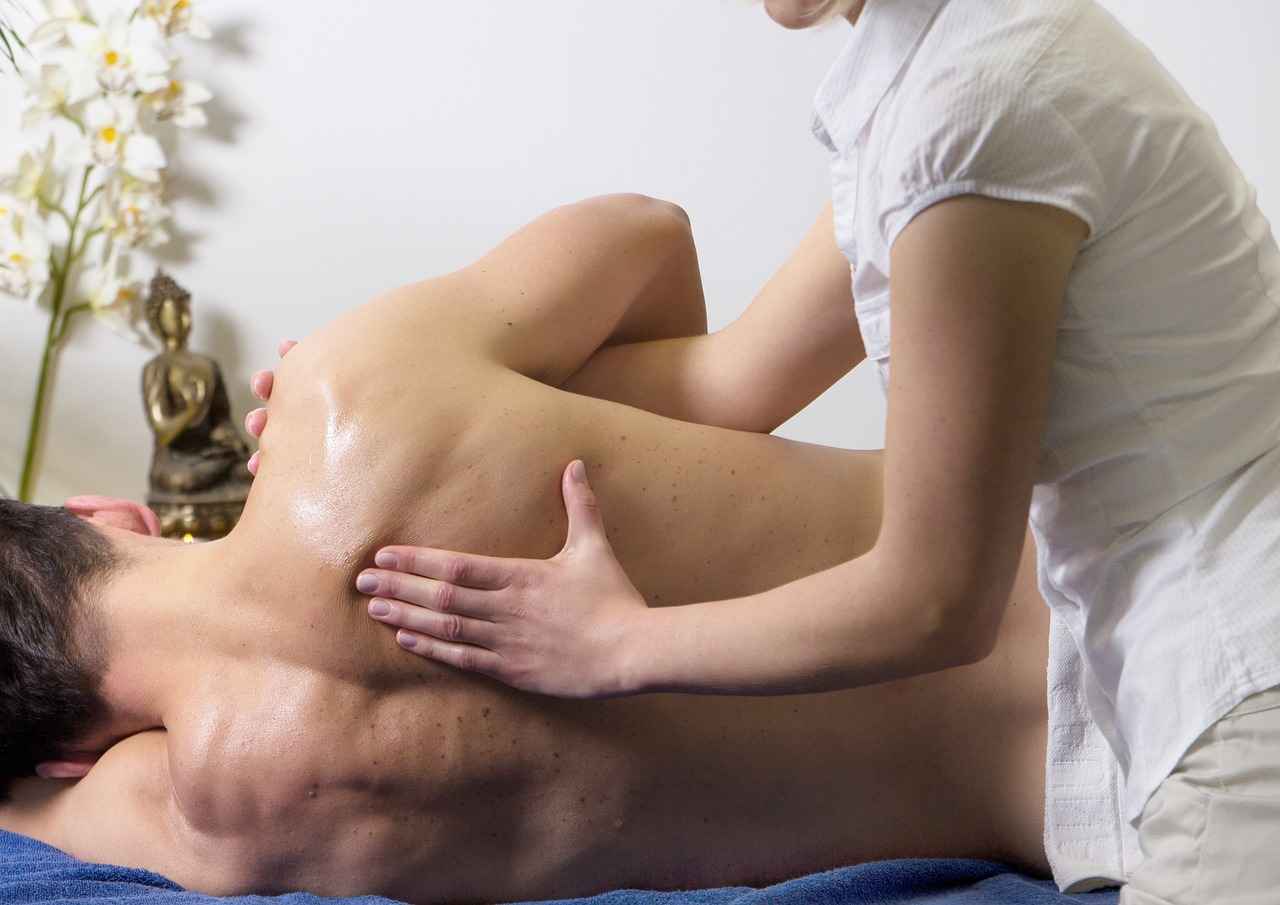
Understanding Asian Massage Techniques
Asian massage techniques represent a rich tapestry of cultural practices, each with its own philosophy and methodology. These techniques are not merely forms of bodywork; they are deeply rooted in ancient traditions that emphasize the connection between body, mind, and spirit. Understanding these practices involves exploring their distinct characteristics, origins, and the benefits they offer.
Traditional Chinese Medicine (TCM) is one of the most well-known frameworks for understanding massage in Asia. Within TCM, Tui Na is a prominent technique that utilizes rhythmic compression along energy channels, or meridians, to promote healing and balance within the body. This method is often integrated with acupuncture and herbal medicine, creating a holistic approach to wellness.
Another significant practice is Ayurvedic massage, which hails from India. This technique is based on the principles of Ayurveda, emphasizing the balance of the body’s three doshas: Vata, Pitta, and Kapha. Ayurvedic massage utilizes warm herbal oils and specific strokes tailored to an individual’s constitution, aiming to detoxify and rejuvenate the body.
- Shiatsu: A Japanese technique that translates to “finger pressure,” Shiatsu focuses on applying pressure to specific points along the body’s meridians, promoting energy flow and relaxation.
- Thai Massage: This unique form combines acupressure and yoga-like stretches, encouraging flexibility and energy circulation, making it both a physical and meditative experience.
Each of these techniques offers unique benefits, from physical relief of tension and pain to enhanced mental clarity and emotional balance. As the world increasingly embraces these ancient practices, understanding the nuances of each technique becomes essential for those seeking holistic wellness.
In summary, Asian massage techniques are not just about relaxation; they are a pathway to understanding the interconnectedness of physical and mental health. By exploring these diverse practices, individuals can find the methods that resonate most with their personal wellness journey.
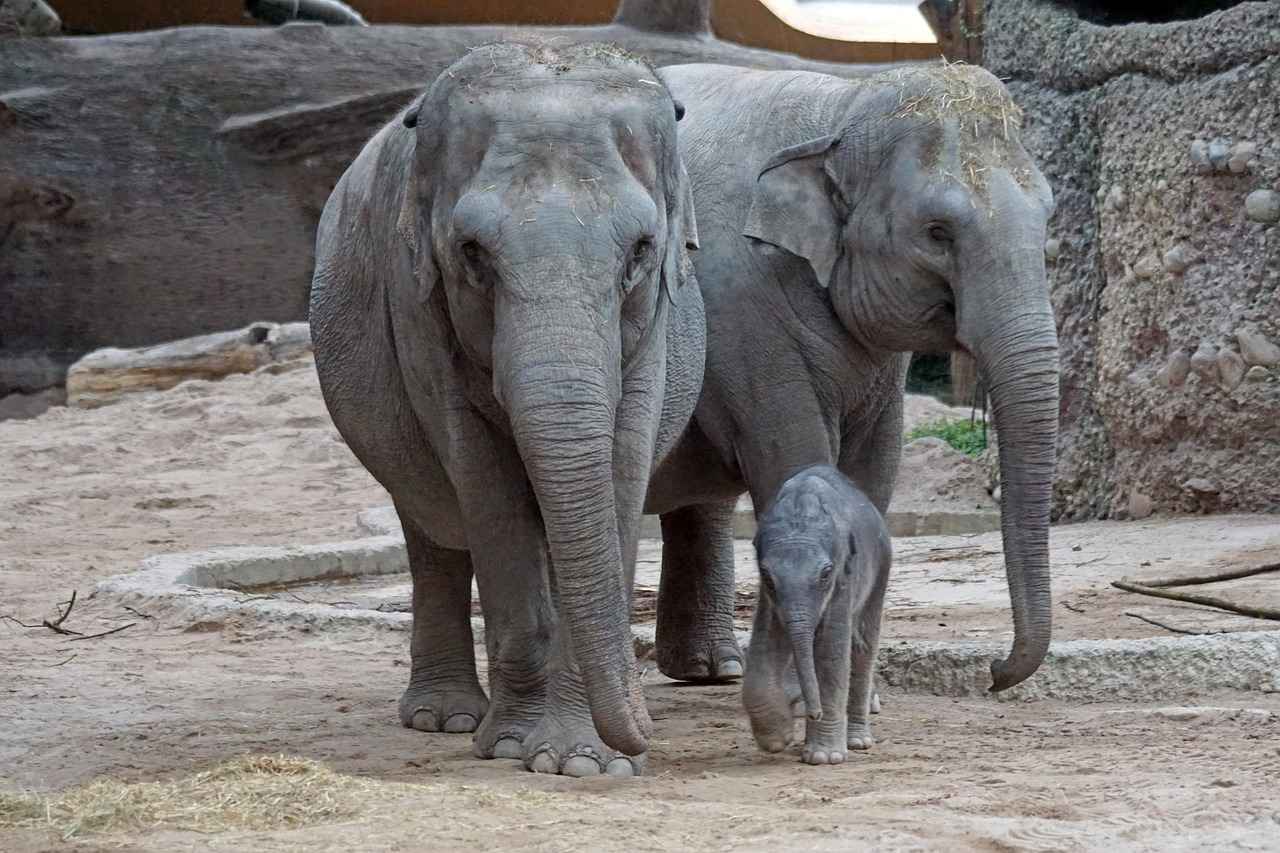
The Historical Roots of Asian Massage
The historical roots of Asian massage are deeply embedded in the cultural and medicinal practices of various Asian societies. Tracing back thousands of years, these techniques have evolved through the integration of philosophy, spirituality, and health practices that are unique to each culture.
In China, the origins of massage can be linked to the ancient practices of Traditional Chinese Medicine (TCM), which dates back over 2,500 years. Techniques such as Tui Na were developed as part of a comprehensive system aimed at restoring balance within the body. TCM emphasizes the flow of Qi (energy) and the importance of maintaining harmony between the body and the environment.
Meanwhile, in India, the roots of massage are intertwined with Ayurveda, a holistic healing system that has been practiced for over 5,000 years. Ayurvedic massage focuses on balancing the body’s three doshas—Vata, Pitta, and Kapha—to promote overall health and well-being. This practice not only addresses physical ailments but also incorporates spiritual elements, making it a comprehensive approach to healing.
In Japan, the development of Shiatsu massage reflects the influence of TCM while incorporating unique Japanese elements. Shiatsu, which means “finger pressure,” utilizes various techniques to stimulate energy points and enhance the body’s natural healing processes. This practice has been refined over centuries, adapting to the needs and preferences of Japanese culture.
Furthermore, Thailand boasts its own rich tradition of massage, characterized by a blend of acupressure and yoga-like stretching. Thai massage is not only a physical practice but also a spiritual journey, emphasizing the connection between body and mind.
As these techniques spread across continents, they have been influenced by local traditions and practices, leading to the diverse array of Asian massage styles we see today. Each culture has contributed its unique perspective, enriching the practice and ensuring its relevance in modern wellness.
Chinese Massage: Tui Na and Beyond
Tui Na is a fundamental practice within the realm of Traditional Chinese Medicine (TCM). This ancient healing art has been utilized for thousands of years, emphasizing the importance of balancing the body’s vital energy, or Qi. The techniques of Tui Na involve various forms of manipulation, including kneading, rolling, and pressing, aimed at promoting circulation and alleviating muscle tension.
One of the core principles of Tui Na is its holistic approach to health. Practitioners believe that physical ailments are often linked to emotional and spiritual imbalances. Therefore, Tui Na not only addresses physical discomfort but also seeks to restore overall harmony within the body. The techniques employed in Tui Na can be tailored to meet individual needs, making it a versatile option for various conditions.
Benefits of Tui Na are extensive. Many individuals report significant relief from chronic pain, improved flexibility, and enhanced energy levels after sessions. Additionally, Tui Na is known to aid in stress reduction and promote relaxation, making it an excellent choice for those seeking mental clarity and emotional balance.
Tui Na also integrates seamlessly with other healing practices in Chinese culture. For instance, it is often used in conjunction with acupuncture and herbal medicine to create a comprehensive treatment plan. This integrative approach allows practitioners to address the root causes of ailments rather than merely treating symptoms.
In summary, Tui Na stands as a testament to the depth of Traditional Chinese Medicine. Its techniques, benefits, and integration with other healing practices highlight its significance in promoting holistic well-being. Whether one is seeking relief from physical discomfort or aiming to enhance overall health, Tui Na offers a profound and effective pathway toward achieving balance and harmony.
Shiatsu: The Japanese Approach
Shiatsu, which translates to “finger pressure” in Japanese, is a therapeutic massage technique that embodies the principles of traditional Chinese medicine while integrating unique Japanese philosophies. This holistic approach focuses on balancing the body’s energy, or “ki”, to promote overall health and well-being.
The practice of Shiatsu is based on the concept that the body has specific pathways, known as meridians, through which energy flows. By applying pressure to these points using fingers, palms, and even elbows, practitioners aim to release blockages and restore harmony. Unlike many Western massage techniques, Shiatsu does not rely on oils or lotions, allowing the therapist to maintain a direct connection with the client’s body.
Shiatsu is often characterized by its rhythmic and gentle pressure, which can vary in intensity based on individual needs. It is designed to address a wide range of conditions, from muscle tension and joint pain to stress and anxiety. Many clients report feeling a deep sense of relaxation and rejuvenation after a session, as Shiatsu not only targets physical ailments but also enhances emotional well-being.
- Benefits of Shiatsu:
- Improves circulation
- Reduces muscle tension
- Enhances flexibility
- Promotes relaxation and stress relief
- Supports immune function
Incorporating Shiatsu into a wellness routine can be a transformative experience. Whether seeking relief from specific ailments or simply looking to relax, this ancient practice offers a unique blend of therapeutic benefits that resonate with individuals worldwide. As the global interest in holistic health continues to rise, Shiatsu stands out as a compelling option for those seeking to enhance their overall quality of life.
finger pressure,
Cultural Insights: The Influence of Asian Massage Techniques Worldwide
This article explores the rich history, techniques, and global impact of Asian massage practices, highlighting their cultural significance and the growing popularity of these methods in wellness and therapeutic settings.
Understanding Asian Massage Techniques
Asian massage encompasses a variety of practices, each with unique philosophies and methods. Prominent techniques include:
- Traditional Chinese Medicine (TCM): Focuses on energy flow and balance.
- Ayurvedic Practices: Centers on holistic health and wellness.
The Historical Roots of Asian Massage
The origins of Asian massage can be traced back thousands of years, evolving through different cultures. Key historical insights include:
- Chinese Origins: Techniques developed alongside TCM.
- Indian Traditions: Ayurvedic methods rooted in ancient scriptures.
Chinese Massage: Tui Na and Beyond
Tui Na is a foundational practice in TCM, emphasizing:
- Manipulation of energy pathways.
- Integration with herbal medicine.
Shiatsu: The Japanese Approach
Simplistically defined as finger pressure, Shiatsu is rooted in TCM and focuses on:
- Pressure points to relieve tension.
- Balancing energy within the body.
Thai Massage: A Holistic Experience
Thai massage combines acupressure and yoga-like stretching, promoting:
- Physical flexibility.
- Mental relaxation.
Ayurvedic Massage: A Unique Indian Tradition
Integral to holistic health in India, Ayurvedic massage emphasizes:
- Personalized treatments based on doshas.
- Natural oils and herbal remedies.
The Global Spread of Asian Massage Techniques
Asian massage techniques have transcended cultural boundaries, gaining popularity worldwide through:
- Adaptations in Western wellness practices.
- Integration in global wellness centers.
Benefits of Asian Massage Techniques
Asian massage offers numerous physical and mental health benefits:
- Physical Benefits: Effective in alleviating pain and enhancing flexibility.
- Mental Health Benefits: Promotes relaxation and reduces stress.
Choosing the Right Asian Massage Technique for You
Selecting the appropriate massage technique can be daunting. Consider the following:
- Your specific health needs.
- Personal preferences regarding pressure and style.
is a Japanese massage technique rooted in traditional Chinese medicine. This part details its principles, techniques, and therapeutic benefits.
Shiatsu is a Japanese massage technique that has its roots in traditional Chinese medicine. The term “Shiatsu” translates to “finger pressure,” which reflects the primary technique used in this form of massage. This article delves into the principles, techniques, and therapeutic benefits of Shiatsu, providing a comprehensive understanding of its significance in wellness practices.
- Principles of Shiatsu: Shiatsu is based on the concept of Qi (or Chi), the vital energy that flows through the body. It aims to balance this energy by applying pressure to specific points, known as tsubos, which correspond to different organs and systems.
- Techniques Used in Shiatsu: Practitioners use their fingers, palms, elbows, and even knees to apply pressure. The techniques include:
- Static Pressure: Holding pressure on specific points to release tension.
- Dynamic Pressure: Rhythmic movements that stimulate circulation and energy flow.
- Stretching: Incorporating gentle stretches to enhance flexibility and relieve muscle tightness.
- Therapeutic Benefits: Shiatsu provides numerous health benefits, including:
- Pain Relief: Effective for chronic pain conditions such as back pain and headaches.
- Stress Reduction: Promotes relaxation and alleviates anxiety.
- Improved Circulation: Enhances blood flow and overall vitality.
- Enhanced Flexibility: Helps improve joint mobility and muscle elasticity.
Shiatsu is not only a therapeutic technique but also a holistic approach to health that integrates the mind, body, and spirit. By understanding its principles and techniques, individuals can appreciate the profound impact it can have on their overall well-being.
Thai Massage: A Holistic Experience
Thai massage is a unique and ancient practice that melds elements of acupressure with yoga-like stretching. Unlike conventional massages that often focus solely on relaxation, Thai massage is a dynamic blend of techniques aimed at promoting both physical and mental well-being. This holistic approach not only addresses physical discomfort but also enhances overall energy flow, making it a popular choice for many seeking a comprehensive wellness experience.
At the heart of Thai massage lies the concept of energy lines, known as Sen. Practitioners believe that these lines are pathways through which life energy flows. By applying pressure to specific points along these lines, therapists can help release blockages and restore balance in the body. This method is complemented by a series of deep stretches that mimic yoga poses, allowing for increased flexibility and relaxation.
One of the most remarkable aspects of Thai massage is its emphasis on mindfulness. Practitioners encourage clients to engage in deep breathing and remain present during the session, fostering a sense of inner peace and clarity. This mental component is crucial, as stress relief is a significant benefit of the practice. Many clients report feeling rejuvenated and mentally sharp after a session, highlighting the profound connection between body and mind.
Moreover, Thai massage is often performed on a mat on the floor, allowing for greater freedom of movement. The therapist uses their hands, elbows, knees, and feet to apply pressure and facilitate stretching. This interactive nature of the massage encourages a more active participation from the recipient, making the experience both engaging and restorative.
In summary, Thai massage offers a comprehensive approach to wellness that integrates physical manipulation with mental relaxation techniques. Its unique blend of acupressure and stretching not only alleviates physical tension but also nurtures the mind, making it a holistic experience that promotes overall well-being.
Ayurvedic Massage: A Unique Indian Tradition
Ayurvedic massage is a vital component of holistic health practices in India, deeply rooted in the ancient science of Ayurveda. This traditional form of therapy not only focuses on physical well-being but also emphasizes the balance of the mind and spirit. By understanding the principles, techniques, and the role of doshas, individuals can experience personalized treatments that cater to their unique health needs.
The foundation of Ayurvedic massage lies in the concept of doshas, which are the three vital energies: Vata, Pitta, and Kapha. Each person has a unique combination of these doshas that influences their physical and emotional characteristics. Ayurvedic practitioners assess an individual’s dosha type to tailor massage techniques that promote balance and harmony within the body.
Among the various techniques used in Ayurvedic massage, Abhyanga stands out as a popular choice. This full-body oil massage utilizes warm herbal oils specific to the individual’s dosha, enhancing circulation and promoting detoxification. Another notable technique is Pindasveda, which involves the use of herbal poultices to relieve muscle tension and improve joint mobility.
In addition to these techniques, Ayurvedic massage often incorporates Shirodhara, a therapeutic practice where warm oil is poured over the forehead, promoting deep relaxation and mental clarity. This method is especially beneficial for those experiencing stress and anxiety.
The importance of Ayurvedic massage extends beyond mere relaxation; it plays a crucial role in preventive healthcare. Regular sessions can help alleviate chronic ailments, boost immunity, and enhance overall vitality. Furthermore, the holistic approach of Ayurveda encourages individuals to adopt a lifestyle that supports their unique constitution, leading to long-term health benefits.
In summary, Ayurvedic massage is not just a treatment but a comprehensive approach to wellness. By understanding the principles of doshas and utilizing personalized techniques, individuals can embark on a journey toward improved health and well-being.
The Global Spread of Asian Massage Techniques
Asian massage techniques have gained remarkable traction across the globe, evolving from their cultural origins into widely embraced practices in various wellness settings. This phenomenon highlights not only the adaptability of these techniques but also their profound impact on health and well-being.
As people increasingly seek holistic approaches to health, Asian massage has found its way into numerous countries, each adapting the techniques to fit local customs and preferences. For instance, in the United States, practitioners often blend traditional Asian methods with Western therapeutic practices, creating unique hybrid treatments. Techniques like Tui Na and Shiatsu are now commonly offered in spas and wellness centers, attracting a diverse clientele eager to experience their benefits.
In Europe, the integration of Asian massage techniques is evident in the rise of wellness retreats that emphasize relaxation and stress relief. Countries such as Germany and France have seen an influx of Asian-inspired wellness centers, where therapies like Thai massage and Ayurvedic treatments are offered alongside traditional European therapies. This cross-cultural exchange enriches the wellness landscape, allowing clients to enjoy a variety of healing modalities.
Furthermore, the digital age has played a crucial role in the popularization of these techniques. Online platforms and social media have enabled practitioners to share their knowledge and experiences, fostering a global community of enthusiasts. As a result, individuals can access information about various Asian massage styles from the comfort of their homes, making it easier to find local practitioners or even learn techniques themselves.
The global spread of Asian massage techniques is not just a trend; it reflects a growing recognition of the importance of holistic health. As these practices continue to be embraced worldwide, they stand as a testament to the enduring power of ancient wisdom in modern wellness.
Western Adaptations of Asian Techniques
As Asian massage techniques gain traction globally, many practitioners in Western countries have begun to embrace and adapt these ancient methods into their practices. This integration is not merely a trend; it reflects a deep appreciation for the holistic approach to health and wellness that these techniques embody.
Modifications and Adaptations
Western practitioners often modify Asian massage techniques to better align with their clients’ preferences and expectations. For instance, while traditional Tui Na focuses on acupressure and energy flow, Western adaptations may incorporate more gentle techniques to cater to clients who are unfamiliar with or apprehensive about deep pressure. Similarly, Shiatsu may be blended with Swedish massage strokes to create a more familiar experience for those seeking relaxation rather than therapeutic intervention.
Benefits Perceived by Clients
Clients report a myriad of benefits from these adapted practices. Many experience enhanced relaxation and stress relief, as the integration of familiar Western techniques can make the experience less intimidating. Additionally, the incorporation of Asian philosophies, such as the balance of energy (Qi), often leads to a greater sense of well-being and holistic health. Clients frequently express appreciation for the personalized approach that considers both physical and emotional needs.
Training and Certification
To ensure effective integration, many Western massage therapists pursue specialized training in Asian techniques. This not only enhances their skill set but also enriches their understanding of the cultural significance behind these practices. Certifications in modalities like Thai massage or Ayurvedic practices provide practitioners with the tools to offer authentic experiences while still meeting the expectations of a Western clientele.
Conclusion
The blending of Asian techniques with Western practices is a testament to the universal quest for wellness. As these practices continue to evolve, they offer clients a unique opportunity to experience the best of both worlds, promoting physical, mental, and emotional health.

Asian Massage in Wellness Centers
As wellness centers increasingly recognize the value of holistic healing, Asian massage therapies are becoming a staple in their offerings. These ancient practices are not merely treatments; they embody a philosophy that emphasizes the interconnectedness of body, mind, and spirit. This section delves into how these techniques are being integrated into mainstream wellness practices across the globe.
Asian massage encompasses a diverse range of techniques, each with its own cultural roots and therapeutic benefits. For instance, Thai massage combines acupressure with yoga-like stretching, promoting flexibility and relaxation. Meanwhile, Shiatsu, originating from Japan, utilizes finger pressure to stimulate energy flow and address various health concerns. These methods are increasingly being adapted in wellness centers to cater to a wider audience, enhancing their therapeutic repertoire.
One of the primary reasons for the growing popularity of Asian massage in wellness centers is its holistic approach. Unlike conventional massage therapies that may focus solely on physical ailments, Asian techniques consider emotional and spiritual health as well. This comprehensive perspective resonates with clients seeking a deeper connection to their wellness journey.
Furthermore, the incorporation of Ayurvedic practices from India into wellness centers emphasizes personalized care. By assessing individual doshas, practitioners can tailor treatments to meet specific health needs, thereby enhancing the effectiveness of the therapy.
| Technique | Origin | Benefits |
|---|---|---|
| Tui Na | China | Balances energy, relieves pain |
| Shiatsu | Japan | Stress relief, promotes energy flow |
| Thai Massage | Thailand | Increases flexibility, enhances relaxation |
| Ayurvedic Massage | India | Personalized wellness, detoxification |
As the demand for holistic health solutions rises, wellness centers are increasingly integrating these Asian massage techniques into their services. This trend not only enriches the client experience but also promotes a deeper appreciation for the cultural significance of these ancient practices. By offering such diverse options, wellness centers are paving the way for a more inclusive and comprehensive approach to health and well-being.
Benefits of Asian Massage Techniques
Asian massage techniques have been celebrated for their profound impact on both physical and mental health. By integrating these practices into personal wellness routines, individuals can experience a multitude of benefits that enhance overall well-being.
One of the most significant advantages of Asian massage is its ability to provide effective pain relief. Techniques such as Tui Na and Shiatsu focus on trigger points and meridian pathways, promoting circulation and alleviating tension in the muscles. This targeted approach not only helps in reducing chronic pain but also enhances flexibility by loosening tight muscles and improving joint mobility.
Asian massage techniques are renowned for their calming effects, which play a crucial role in stress reduction. Practices such as Thai massage incorporate rhythmic movements and deep breathing, fostering a state of relaxation that can diminish anxiety levels. Regular sessions can lead to improved mood and mental clarity, making it easier to cope with daily stressors.
Incorporating Asian massage into one’s wellness routine promotes a holistic approach to health. By addressing both the physical and emotional aspects of well-being, these techniques help restore balance. The principles of Ayurveda, for example, emphasize the importance of aligning the body’s energies, which can lead to improved vitality and overall health.
Another key benefit of Asian massage is its ability to enhance circulation. Improved blood flow not only nourishes the muscles and organs but also aids in the detoxification process. Techniques such as acupressure stimulate the lymphatic system, promoting the elimination of toxins and contributing to better health.
Many individuals who regularly receive Asian massages report better sleep quality. The relaxation induced by these techniques can help alleviate insomnia and promote deeper, more restorative sleep. This benefit is particularly important in today’s fast-paced world, where quality sleep is often compromised.
In summary, the benefits of Asian massage techniques extend far beyond mere relaxation. By addressing both physical discomfort and mental stress, these practices offer a comprehensive approach to wellness that can enhance quality of life.
Physical Benefits: Pain Relief and Flexibility
Asian massage techniques are renowned for their remarkable ability to address physical discomfort and improve overall flexibility. These methods, deeply rooted in ancient practices, utilize a variety of approaches tailored to individual needs. Here, we delve into specific techniques that effectively target pain relief and enhance flexibility.
- Tui Na: This traditional Chinese massage technique employs rhythmic compression along energy channels, or meridians, to alleviate pain. By stimulating acupressure points, Tui Na promotes circulation and helps release muscle tension, making it particularly effective for chronic pain conditions.
- Shiatsu: Originating from Japan, Shiatsu focuses on applying pressure with fingers and palms to specific body points. This technique not only alleviates pain but also enhances flexibility by encouraging the body to relax and stretch naturally. Regular sessions can lead to improved mobility and reduced stiffness.
- Thai Massage: Known for its unique combination of acupressure and yoga-like stretching, Thai massage is designed to increase flexibility while relieving pain. Practitioners use their hands, knees, legs, and feet to move the recipient into various positions, facilitating deep stretches that enhance muscle elasticity and joint mobility.
- Ayurvedic Massage: This Indian technique emphasizes the use of warm oils tailored to an individual’s dosha, or body constitution. The gentle, flowing strokes not only relieve tension but also promote relaxation, allowing the body to release accumulated stress and improve overall flexibility.
Each of these techniques offers unique benefits, making them valuable tools for anyone seeking to alleviate pain and enhance their physical capabilities. By integrating these practices into a regular wellness routine, individuals can experience profound improvements in both their physical health and overall well-being.
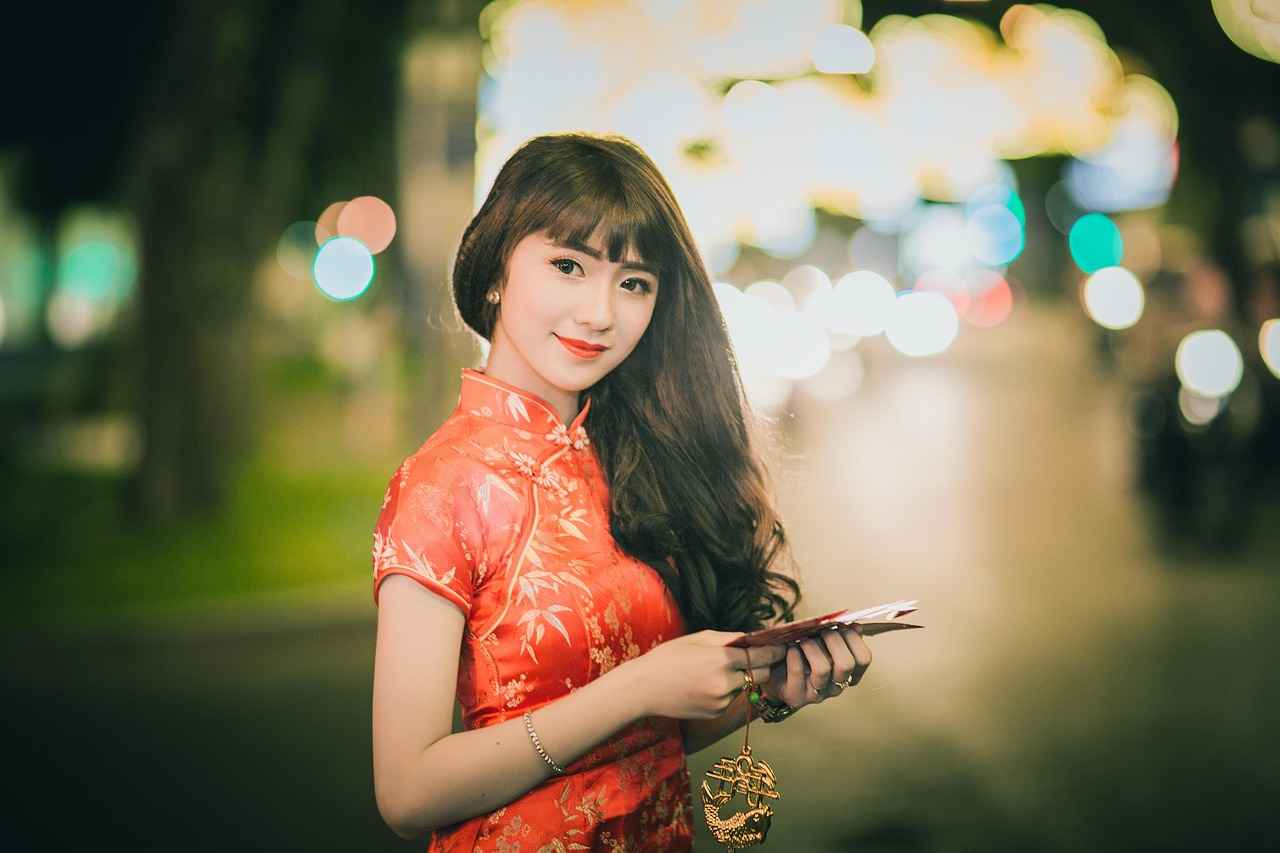
Mental Health Benefits: Stress Reduction and Relaxation
The practice of Asian massage techniques is deeply rooted in ancient traditions, emphasizing the connection between the body and mind. These techniques, including Tui Na, Shiatsu, and Thai massage, are not merely physical therapies but holistic approaches that foster mental well-being.
One of the most significant benefits of Asian massage is its ability to promote relaxation. The gentle manipulation of muscles and pressure points stimulates the body’s natural relaxation response, leading to a decrease in cortisol levels, the hormone associated with stress. As clients receive these massages, they often report feelings of tranquility and a profound sense of calm, which can last long after the session has ended.
Furthermore, these techniques encourage mindfulness, allowing individuals to focus on their breathing and the sensations in their bodies. This practice of mindfulness can help to alleviate symptoms of anxiety and depression, providing a much-needed respite from daily stressors. By fostering a deeper connection to oneself, Asian massage techniques empower individuals to manage their mental health more effectively.
Another aspect of these practices is the incorporation of traditional philosophies, such as the concept of Qi in Chinese medicine or the balance of doshas in Ayurveda. These philosophies suggest that mental health is intrinsically linked to physical health, reinforcing the idea that addressing physical tension can lead to improved emotional states.
Incorporating Asian massage techniques into a regular wellness routine can be transformative. As individuals experience the calming effects, they often find it easier to cope with stress, leading to enhanced overall mental health. Whether through a local wellness center or at home, these practices offer valuable tools for achieving a more balanced and peaceful state of mind.
Choosing the Right Asian Massage Technique for You
Selecting the appropriate massage technique can be a daunting task, especially with the myriad of options available within Asian massage practices. Understanding your individual needs and preferences is crucial in making an informed decision that enhances your overall well-being.
To begin, consider what specific benefits you seek from a massage. Are you looking for pain relief, stress reduction, or perhaps a combination of both? Each Asian massage technique offers unique advantages:
- Tui Na: This Chinese technique focuses on acupressure and manipulation, making it ideal for pain management and restoring balance.
- Shiatsu: Rooted in Japanese tradition, Shiatsu employs finger pressure to promote relaxation and energy flow, perfect for those seeking a holistic approach.
- Thai Massage: Combining stretching and acupressure, Thai massage is excellent for enhancing flexibility and relieving tension.
- Ayurvedic Massage: This Indian practice tailors treatments based on your unique dosha, promoting overall wellness and balance.
Next, reflect on your personal comfort. Different techniques can vary in intensity and style. For instance, if you prefer a gentle touch, Shiatsu may suit you better than the more vigorous Tui Na. Additionally, consider any health conditions you may have, as some techniques may not be advisable for certain ailments.
Finally, consultation with a qualified massage therapist can provide valuable insights tailored to your specific situation. They can assess your needs and recommend the most suitable technique, ensuring a personalized experience that aligns with your wellness goals.
By taking these factors into account, you can confidently choose the right Asian massage technique that resonates with your body and mind, paving the way for a rejuvenating experience.
Frequently Asked Questions
- What are the main types of Asian massage techniques?
Asian massage encompasses various techniques such as Tui Na from China, Shiatsu from Japan, and Thai massage. Each technique has its unique philosophy and approach to healing, focusing on different aspects of physical and mental well-being.
- How can I choose the right Asian massage for my needs?
Selecting the right massage technique can be a bit overwhelming. Consider your personal health goals, whether you’re looking for pain relief, relaxation, or a holistic approach. Consulting with a qualified therapist can also help you find the best fit for your individual needs.
- What are the benefits of Asian massage techniques?
Asian massage techniques offer numerous benefits, including pain relief, improved flexibility, and enhanced mental health. These practices are known for their ability to reduce stress and promote relaxation, making them a valuable addition to any wellness routine.
- Can Asian massage techniques be adapted for Western practices?
Absolutely! Many Western wellness centers have embraced Asian massage techniques, often incorporating them into their offerings. Adaptations may include modifications to techniques or the integration of elements from other massage styles to suit different client preferences.
- Are there any specific health conditions that benefit from Asian massage?
Yes, Asian massage techniques are particularly beneficial for conditions like chronic pain, stress-related disorders, and muscle tension. They can also support overall well-being by promoting relaxation and improving circulation.
